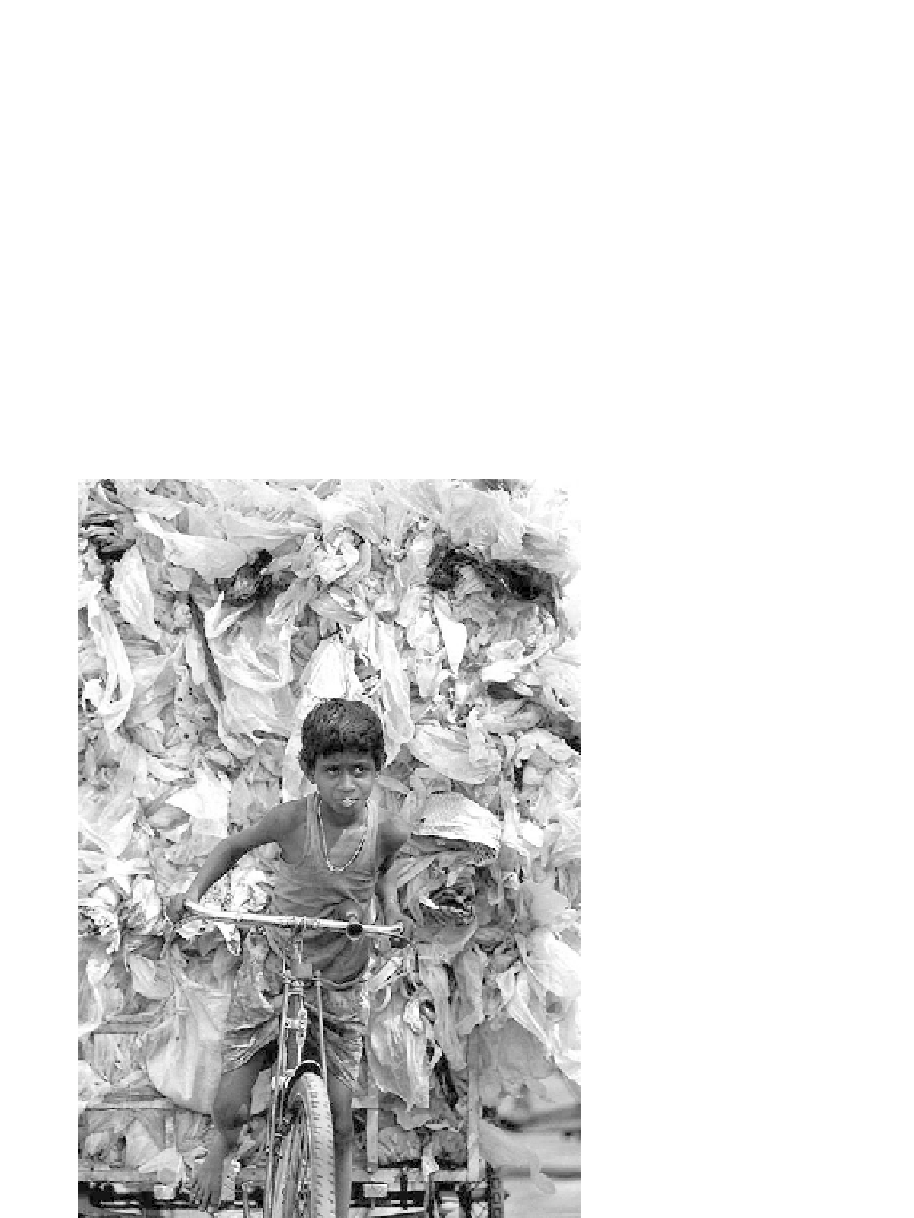Geography Reference
In-Depth Information
include
economic development zones (EDZs)
or export
processing zones in adjacent political units. A region may
include several countries, as in the case of the “develop-
ment triangle” involving Singapore plus parts of Malaysia
and Indonesia. Or it might involve several provinces, as in
the case of southern China. Development zones are inte-
grated across borders by transportation corridors and
telecommunication links into the global system of produc-
tion, commerce, finance, distribution, and consumption.
Globalization is not only about the hyper-mobility of
capital and the rise of information economies. It is also
about specific types of places and work processes. New
labor dynamics have evolved in the context of global
cities and their interconnectivities. Increasing numbers
of women and migrant laborers are becoming enmeshed
in the global economy .
CHILD LABOR
The International Labor Organization estimates that
there are 250 million economically-active children in the
world today . Sixty-four percent are in Asia, where at least
15 percent of all 10- to 14-year-olds labor in fields and
factories.
Child labor is especially common in South Asia,
where 30-46 million are exploited in the grimmest con-
ditions (Figure 4-12). In Nepal, 40 percent of children
from ages 10 to 14 work in mines, quarries, and carpet
factories. In the case of carpet weaving, children are
trained at a very young age (Figure 4-13). Bangladesh
has as many as 30 million child laborers. Dhaka has the
largest number of child laborers in Asia, with some
750,000 children between the ages of 10 and 14 providing
Figure 4-13
These rug weavers are Tibetan refugees living in Nepal. Children
quickly learn their trade by watching and helping their mother .
Photograph courtesy of B. A. Weightman.
Figure 4-12
This is one of thousands of children working in South Asia.
©Deshakalyan Chowdhury/AFP/Getty Images, Inc.


















Search WWH ::

Custom Search